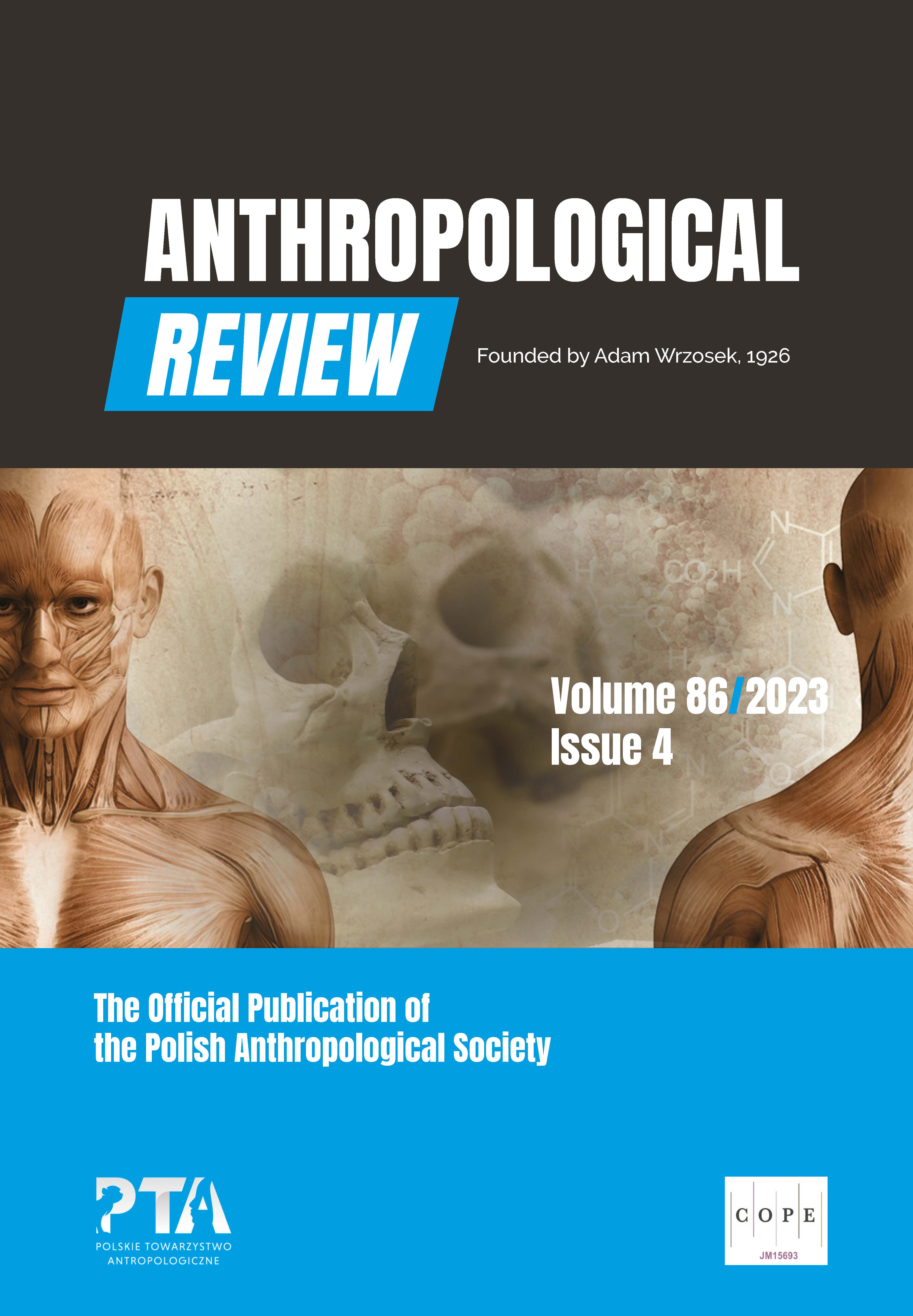Cardiometabolic risk assessment in Eastern Slovak young adults using anthropometric indicators
Cardiometabolic risk assessment in Eastern Slovak young adults using anthropometric indicators
Author(s): Michaela Zigová, Eva Petrejčíková, Eva Petrejčíková, Marta Mydlárová Blaščáková, Marta Mydlárová Blaščáková, Jana Gaľová, Hedviga Vašková, Soňa Kalafutová, Miriama ŠlebodováSubject(s): Anthropology, Health and medicine and law
Published by: Wydawnictwo Uniwersytetu Łódzkiego
Keywords: Anthropometry; Cardiometabolic complications; Asymptomatic individual; Primary prevention; Young adulthood
Summary/Abstract: Introduction: Selected anthropometric indicators, such as anthropometric measurements, indices, or ratios could be reliable predictors of future cardiometabolic risk in primary prevention, especially in young adults.Aim: This study aimed to establish cardiometabolic risk status in young Eastern Slovak adults according to anthropometric indicators.Material and methods: Indicators used in this study, such as heart rate, blood pressure, five anthropometric measurements, as well as a total of 23 anthropometric indices and ratios were selected based on the available literature. These indicators were analyzed in 162 young adult participants of both sexes with a mean age of 20.78±2.22 years. The analyzed indices and ratios were calculated by routine anthropometry and were correlated with blood pressure and heart rate in the whole research group as well as among subgroups divided according to sex, obesity and hypertension status.Results: Our results showed frequently higher values of input characteristics in males (71.88%), and statistically significant differences between sexes in 81.25% of the characteristics. The values of systolic blood pressure were above the norm in all males, and they also dominated in the obesity group. Correlation analyses conducted on all participants and in subgroups indicated a positive statistical significance in several indicators. The vast majority of the anthropometric indicators were significantly correlated with physiological indicators in almost all subgroups. Only A body shape index (ABSI) correlation coefficients did not show a significant correlation with physiological indicators in all analyzed subgroups. The correlations tended to be stronger among subgroup exhibiting potential to obesity. All analyzed indices and ratios were significantly correlated (p ≤ 0.05), predominantly with blood pressure components rather than heart rate, especially in participants with the potential for disease complications than in participants without them.Conclusion: The analyzed indicators are noninvasive and useful although they may be at different levels of association and clinical significance for various conditions. Thus some of the indicators may be standardly used in the early diagnostic process for monitoring cardiovascular health and risk stratification of patients.
Journal: Anthropological Review
- Issue Year: 86/2023
- Issue No: 4
- Page Range: 81-97
- Page Count: 18
- Language: English

